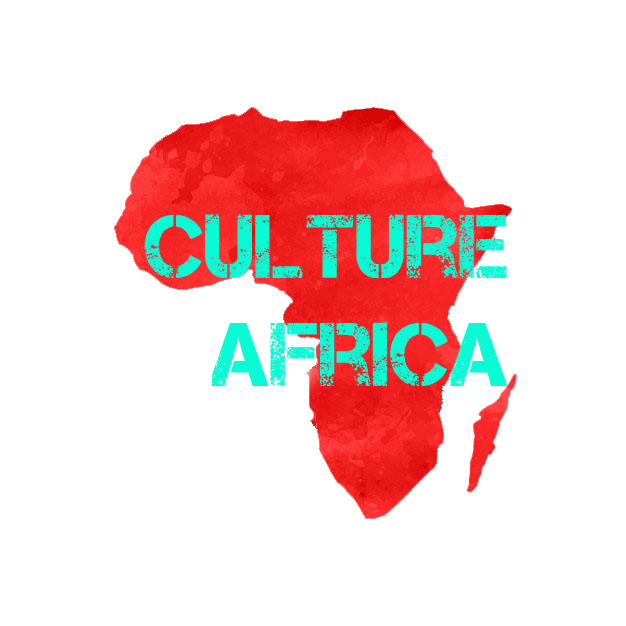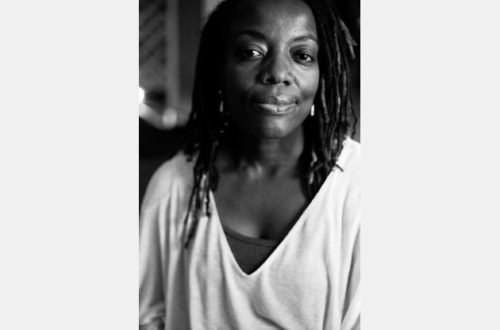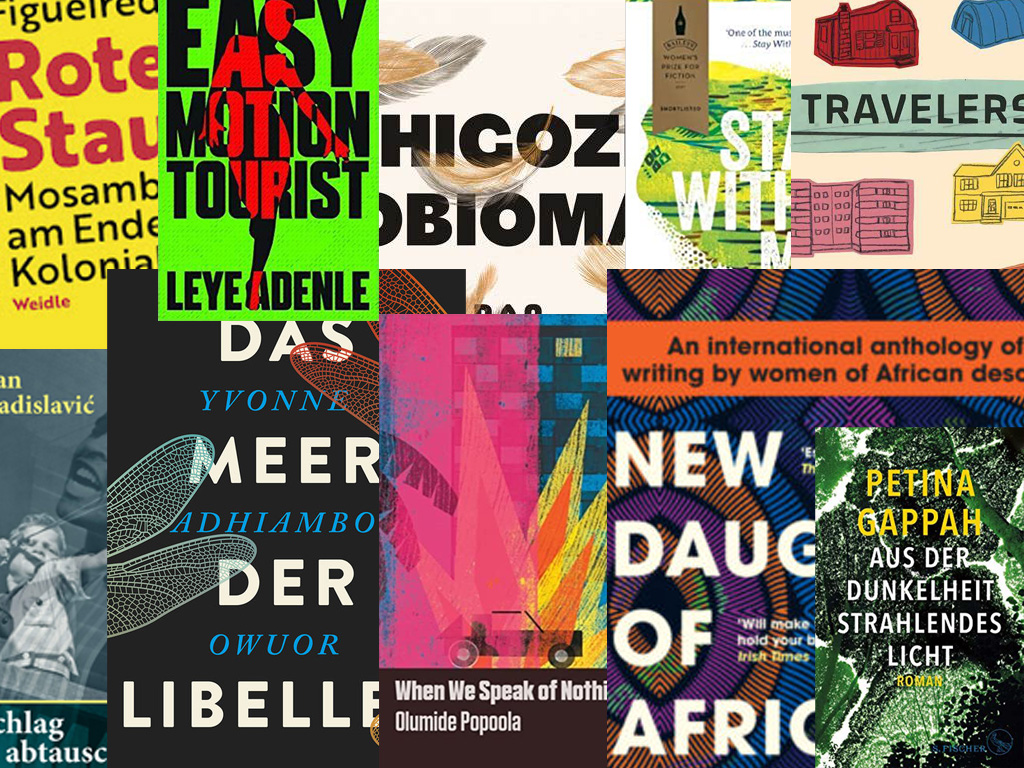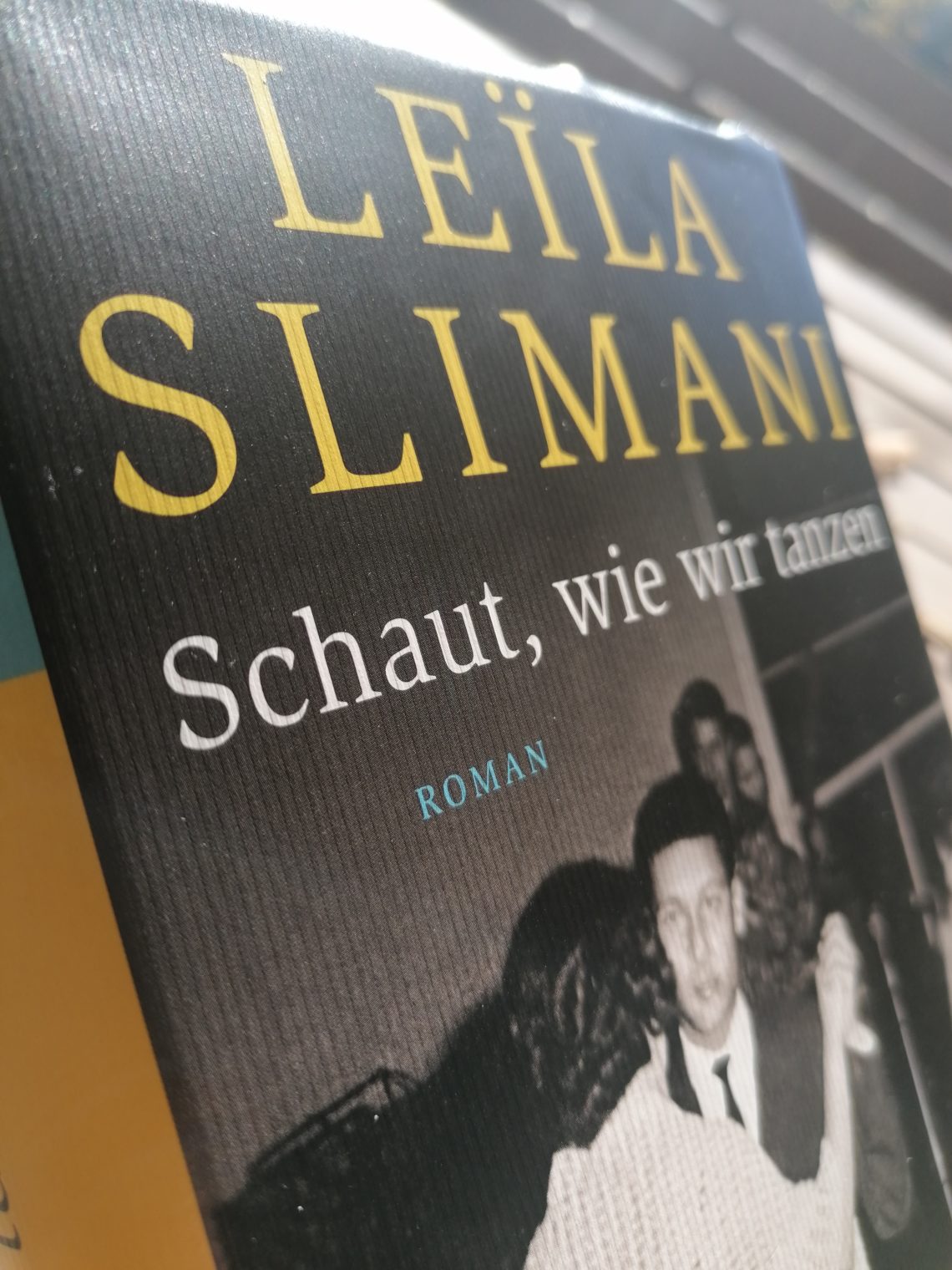
Leïla Slimani: Schaut wie wir tanzen//Look, how we dance // Book Review
Schaut, wie wir tanzen von Leïla Slimani ist nach „Das Land der Anderen“, der zweite Teil ihrer autobiographischen Frankreich-Marokko Trilogie. Die deutsche Übersetzung von Amelie Thoma ist nun bei Luchterhand erschienen. FOR THE ENGLISH VERSION PLEASE SCROLL DOWN Schon im ersten Band setzte sich Slimani intensiv mit der Geschichte ihres Heimatlandes Marokko, das auch eng mit ihrer jetzigen Heimat Frankreich verbunden ist, auseinander. Das Buch wurde ein großer Erfolg. Leïla Slimani ist mittlerweile eine der großen Namen der französischen Literatur. Die marokkanischen Wurzeln, die Geschichte des Landes ihrer Eltern und ihrer Wahlheimat Frankreich bieten genug Stoff für ein großes Epos. Es ist eine unbequeme Geschichte, die beide Länder bis heute prägen. Während sie sich in Frankreich als führendes Mitglied der „Frankophonie“ für diese Sprache stark macht, lässt sie keinen Zweifel daran, dass sie zur Aufarbeitung der Kolonialherrschaft und ihrer Folgen in Marokko keine große Rücksicht nimmt:
„In meiner Generation in Afrika wissen wir wenig darüber, was die Unabhängigkeit in den 1960er Jahren für unsere Eltern bedeutete. Man darf nicht glauben, dass die Instrumentalisierung der Geschichte oder Tabus nur auf der Seite derjenigen liegen, die kolonialisiert haben. In Marokko wollen die Menschen nicht über die Kolonialisierung sprechen. Denn es ist eine Demütigung, eine Schande. Es gibt Schweigen auf beiden Seiten des Mittelmeers. Ich wollte diese beiden Schweigen bekämpfen, und auch ich wollte niemanden verschonen.“
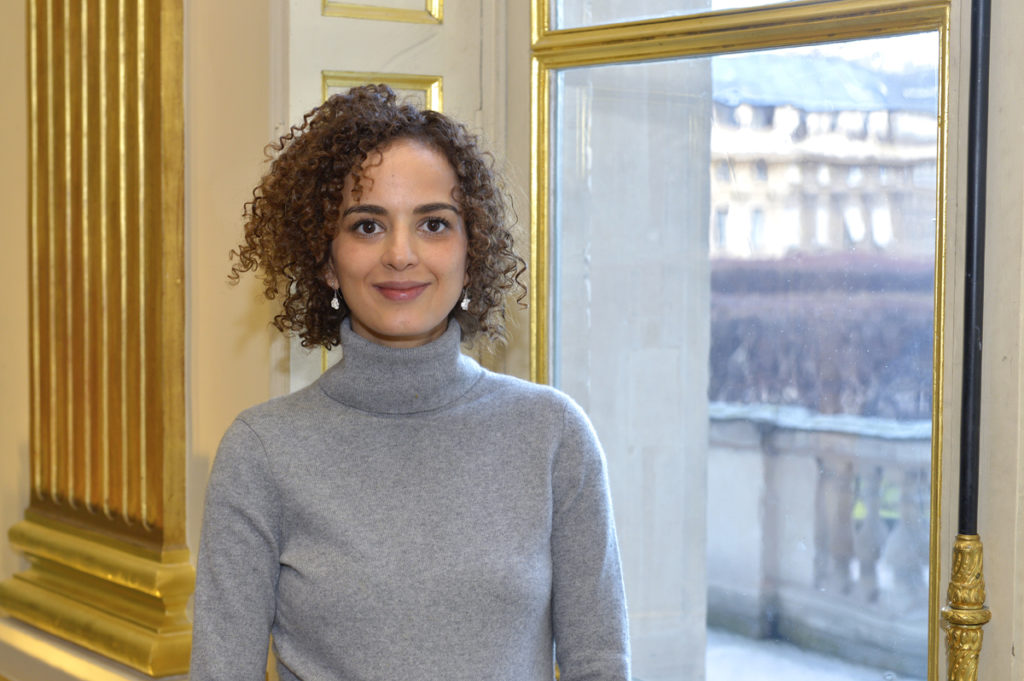
Mit ihrer Marokko-Trilogie beleuchtet Leïla Slimani ein immer noch nicht aufgearbeitetes Kapitel der französischen wie auch marokkanischen Geschichte. Es geht nicht um Schwarz-Weiß Malerei, denn dazu ist die Geschichte, sind die Verbindungen und Entwicklungen beider Länder und ihrer Menschen, viel zu komplex. Slimanis Familie entstammt der oberen Mittelschicht des Landes. Man kann also von Profiteuren der Kolonialzeit sprechen. Und sie macht in ihren Büchern auch keinen Hehl daraus. Es ist ein globales Phänomen der Kolonialzeit, dass es bei den vielen Opfern und Verlierern auch die Menschen gab, die aus dem Okkupationssystem einen Vorteil zogen. Da macht Marokko keine Ausnahme. Das Wunderbare an dieser Trilogie ist, dass sie sich der Geschichte ermächtigt, dass es eine marokkanische Autorin in Frankreich ist, die die Geschichten erzählt.
Auch wer den ersten Band nicht gelesen hat, kann mühelos der Erzählung Slimanis im neuen Band folgen. Ein Glossar am Anfang macht uns mit den wichtigsten Figuren vertraut. Was ist es nun also, dass dieses Buch so besonders macht? Sind es die Vorschusslorbeeren, der bekannte Namen Slimanis als Bestsellerautorin? Noch während man sich diese Frage stellt, ist es schon bald um einen geschehen. Der Roman hat eine ganz eigene Sogkraft. Wird man hineingezogenen in ihren Kosmos. Ein Kosmos aus wahrlich originalen Figuren und hinreißenden Geschichten. Es ist ein munteres, multiperspektivisches Erzählen. Mit viel Detailfreude und hinreißenden Szenen.
Wir sind im Marokko Mitte, Ende der Sechziger Jahre. Während im westlichen Europa die Student:innen rebellieren, linke Gedanken und alternative Lebensformen um sich greifen, suchen auch im postkolonialen Marokko die Menschen nach Zeichen der Hoffnung auf ein Leben in Wohlstand und Freiheit.

Zentraler Ort der Geschichte ist das Landgut von Amine Belhaj. Er hat es dort über die Jahrzehnte zu einigem Wohlstand gebracht, die französische Okkupation für sich und die Entwicklung seiner Landwirtschaft genutzt. Seine Tochter Aïcha studiert in Straßburg. Für Amine ist es aufstrebendes Land, doch die alte Ordnung gerät gehörig ins Wanken. Er sieht die jungen Menschen, statt auf seinem Landgut zu arbeiten, in die Städte abwandern. Amine:
“Woher, glaubt ihr, kommt all das?” fragte er mit ausgestrecktem Arm. “Glaubt ihr, ich hatte Glück? Mit Glück hat das hier nichts zu tun.” er warf einen Blick auf die Fotografie des Monarchen und fand, dieses Land erwarte zu viel vom Makhzen und den Mächtigen. Was der König wollte, waren fleißige Arbeiter, selbstbewusste Bauern, Marokkaner, die stolz waren auf ihre hart verdiente Unabhängigkeit. Ausschnitt aus “Schaut wie wir tanzen”
Wie bei Amine, gibt es auch in Marokkos Jugend neben dem Stolz, sich der kolonialen Abhängigkeit entledigt zu haben auch die Faszination für das westliche Modell. Anhand verschiedener Figuren erleben wir die vielen Facetten dieser aufregenden Zeit.
Gleichzeitig sickert eine neue Form von westlicher Kultur in das Land, das schon seit langem von westlichen Schriftsteller:innen und Maler:innen romantisiert wurde. Diesmal sind es junge Europäer:innen, die als Hippies die Küstenstädtchen wie Essaouira bevölkern. Bekannte Popgrößen wie Jimi Hendrix und die Rolling Stones tun es ihnen nach. Selbst der berühmte französische Philosoph Roland Barthes lebt und lehrt zeitweilig im Land. Es sind jedoch Randfiguren in diesem Roman. Vieles ist jedoch historisch verbürgt. Die Protagonisten des Romans werden nicht direkt auf die berühmten Popikonen treffen. Die Falle ist gelegt, doch Leila Slimani ist klug genug, nicht hinein zu tappen. Die Hinterlassenschaften und Deformationen des Landes durch die französische Kolonialherrschaft werden an den Protagonisten der weit verästelten Familie Belhaj entlang erzählt. Und das gelingt sehr wirkungsvoll.
Bereitwillig leidet man mit, wenn schon am Anfang ein trautes Idyll dem Swimmingpool, einer Aufstiegsmetapher des Westens, auf dem Landsitz von Aïchas Vater zerstört wird. Ist hautnah dabei, wenn Aïcha sich im brodelnden Frankreich 1968 als Medizinstudentin behauptet. Was Slimanis Buch besonders macht, ist die Konfrontation der Blickwinkel. Hat man sich als europäischer Leser insgeheim gewundert, dass marokkanische Farmer wie Aïchas Vater Amine, sich Statussymbole des Westens wie ein Swimmingpool, aneignen, das süße Leben in Bars und Clubs an der Küste genießen wollen, so bringt Slimani mit Aïcha eine wirklich wunderbare Figur in die Geschichte.
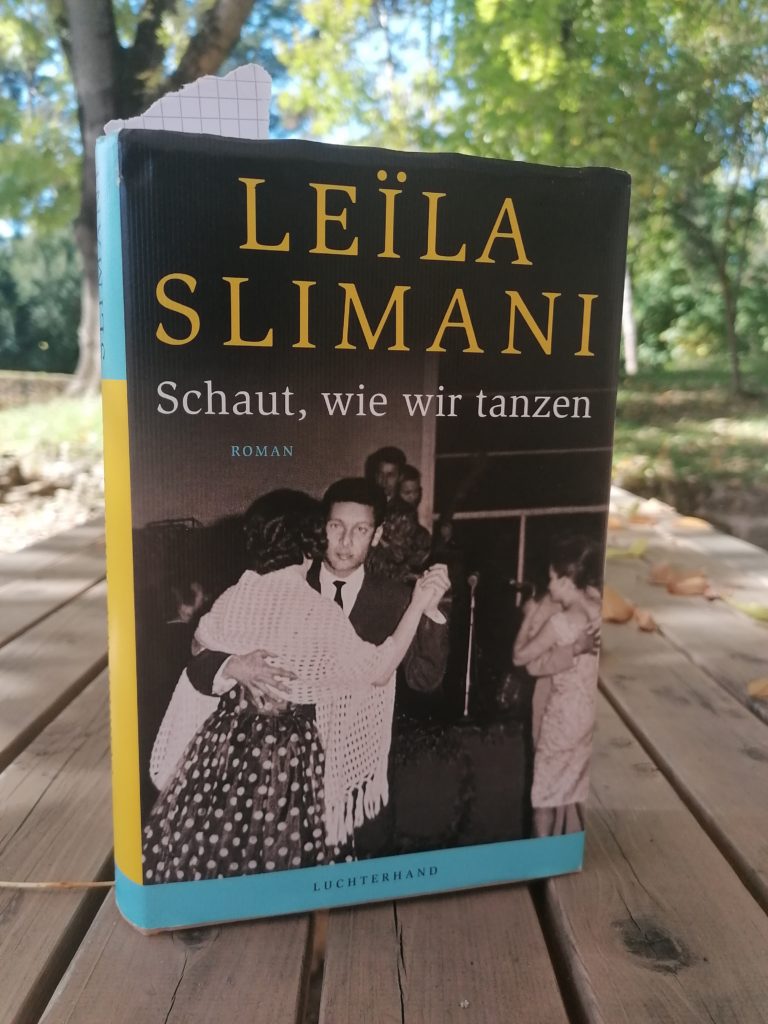
Als moderne, kluge wie auch nüchterne Frau, stellt sie nicht nur, wie erwartet, das in männliche Traditionen erstarrte Königreich Marokko in Frage. Ein Land, das es ihr schwer macht, ihre Fähigkeiten als Ärztin einzubringen. Umwerfend ist vor allem auch Aïchas kühler, kritischer Blick auf die weiße, überwiegend männliche 1968er Bewegung. Es sind die anderen, die dort protestieren, denn sie selbst will mit ihrem Studium vorankommen, etwas aus ihrem Leben machen. Andere Völker befreien, Marxismus, Arbeiter mitbestimmen lassen, wie es die Student:innen fordern: Es ist ihr egal, sie hat davon keine Ahnung. Sie will eine gute Ärztin werden. Studentenaktionen langweilen sie:
“Das Megafon ging von Hand zu Hand, und Aicha langweilte sich. Sie wagte nicht, es David zu sagen, aber sie fand seine Freunde hysterisch, überzogen und manchmal sogar lächerlich. All die großen Worte, all die Konzepte schienen ihr sinnlos. Woher nahmen sie nur ihren Eifer? Wie kamen sie zu diesem kindlichen Idealismus? Und vor allem, warum hatten sie keine Angst? Ihr fiel ein arabisches Sprichwort ein, das ihr Vater oft gebrauchte: “Wenn Gott eine Ameise bestrafen will, verleiht er ihr Flügel.” Aicha war eine Ameise, eifrig und arbeitsam. Und sie hatte keine Absicht davonzufliegen. Ausschnitt aus “Schaut wie wir tanzen”
So wird also nenbenbei die heilige Kuh der 1968er entsorgt. Und sie verliebt sich bei ihrer Rückkehr in ihre Heimat Marokko in den jungen Karl Marx. Der nennt sich wirklich so in dieser Geschichte. Aber eigentlich ist es der idealistische Mehdi. Er verkörpert den Aufbruch des Landes, der nun auch in Aïchas Gegenwart den Duft nach Freiheit und Veränderung versprüht. Wirkungsvoll werden sich die beiden (ausgerechnet während der amerikanischen Mondlandung 1969, dem Ereignis der Epoche), am Strand bei Casablanca sehr nahekommen. Dennoch wird sie sich nicht so einfach den Männern fügen. Aïcha hat einen eigenen Plan.
Da ist auch Omar, ein Bruder Amines, der als Geheimdienstoffizier die dunkle Seite der Macht repräsentiert. Denn aller Freiheitsbestrebungen zum Trotz befinden wir uns in einem autoritären Staat, der auch vor willkürlichen Verhaftungen, Folter und Hinrichtungen nicht Halt macht. Omar ist in Diensten des jungen Königs Hassan II., der dann dennoch den jungen Staat Marokko zu einem aufstrebenden Land Nordafrikas machen wird. Dies allerdings in alleiniger Herrschaft. Seine Macht hatte sich Hassan II. 1965 durch das Ausschalten des Parlaments gesichert. Erst in den 1990er Jahre gab es freie Wahlen. In die Nähe des Königs wird es auch ein anderes Familienmitglied schaffen. Und so erleben wir sehr gut beobachtet und beschrieben, die Geschichten und Geschichte Marokkos, die ja auch Leïla Slimanis eigene Geschichte ist. Sehr präzise und auf den Punkt, wenig mäandernd, eher lustvoll werden die Geschichten vorangetrieben. Das ist Entwicklungsroman vom Feinsten. Die Ermächtigung der eigenen Geschichte als bewegendes Stück Literatur, das ist Leïla Slimani in “Schaut, wie wir tanzen” meisterhaft gelungen. Es ist eines der besten Bücher des Jahres. Hans Hofele
Leïla Slimani: “Schaut, wie wir tanzen!”
Aus dem Französichen von Amelie Thoma
Luchterhand Verlag, 380 Seiten
//ENGLISH VERSION
Look, How We Dance by Leïla Slimani is the second part of her autobiographical France-Morocco trilogy after “The Land of Others“. The German translation by Amelie Thoma has now been published by Luchterhand. Already in the first volume, Slimani dealt intensively with the history of her home country Morocco, which is also closely linked to her current homeland France. The book was a great success. Leïla Slimani is now one of the great names in French literature. Her Moroccan roots, the history of her parents’ country and her adopted home of France provide enough material for a great epic. It is an uncomfortable story that characterizes both countries to this day. While she campaigns for this language in France as a leading member of the “Francophonie”, she leaves no doubt that she does not take much account of coming to terms with colonial rule and its consequences in Morocco:
“In my generation in Africa, we know little about what independence in the 1960s meant for our parents. One must not believe that the instrumentalization of history or taboos are only on the side of those who have colonized. In Morocco, people don’t want to talk about colonization. Because it is a humiliation, a disgrace. There is silence on both sides of the Mediterranean. I wanted to fight these two silences, and I didn‘t want to spare anyone.”
With her Morocco trilogy, Leïla Slimani sheds light on a chapter of French and Moroccan history that has still not been dealt with. It is not about black and white painting, because the history, the connections and developments of both countries and their people, are far too complex. Slimani’s family comes from the upper middle class of the country. One can therefore speak of profiteers of the colonial era. And she makes no secret of it in her books. It is a global phenomenon of the colonial era that among the many victims and losers, there were also the people who took advantage of the occupation system. Morocco is no exception. The wonderful thing about this trilogy is that it empowers the story, that it is a Moroccan author in France who tells the stories. Even those who have not read the first volume can easily follow Slimani’s story in the new volume. A glossary at the beginning familiarizes us with the most important figures. So what is it that makes this book so special? Is it the advance praise, the well-known name of Slimani as a bestselling author? Well, the novel has its own pull. If you are drawn into their cosmos. A cosmos of truly original characters and ravishing stories. It is a lively, multi-perspective narrative. With a lot of attention to detail and ravishing scenes.
We are in Morocco in the mid, late sixties. While in Western Europe students are rebelling, leftist thoughts and alternative ways of life are spreading, people in postcolonial Morocco are also looking for signs of hope for a life of prosperity and freedom.

The central place of the story is the estate of Amine Belhaj. He has achieved some prosperity there over the decades, using the French occupation for himself and the development of his agriculture. His daughter Aïcha studies in Strasbourg. For Amine it is an up-and-coming country, but the old order is shaking. Instead of working on his estate, he sees the young people migrating to the cities. As with Amine’s, Morocco’s youth have a fascination with the Western model, in addition to the pride of having gotten rid of colonial dependence. On the basis of various figures, we experience the many facets of this exciting time.
At the same time, a new form of Western culture is seeping into the country, which has long been romanticized by Western writers and painters. This time it is young Europeans who populate the coastal towns like Essaouira as hippies. Well-known pop greats such as Jimi Hendrix and the Rolling Stones do the same. Even the famous French philosopher Roland Barthes lives and teaches temporarily in the country. However, there are marginal characters in this novel. However, much is historically verified. The protagonists of the novel will not meet the famous pop icons directly. The trap has been laid, but Leila Slimani is smart enough not to fall into it. The legacies and deformations of the country caused by French colonial rule are told along the protagonists of the widely ramified Belhaj family. And this succeeds very effectively. One willingly suffers when at the beginning a cozy idyll is destroyed in the swimming pool, a metaphor of ascent of the West, on the country estate of Aïcha’s father. Is there up close when Aïcha asserts herself as a medical student in seething France in 1968. What makes Slimani’s book special is the confrontation of perspectives. If as a European reader you have secretly wondered that Moroccan farmers like Aicha’s father Amine want to appropriate status symbols of the West like a swimming pool, enjoy the sweet life in bars and clubs on the coast, Slimani brings a truly wonderful character into the story with Aïcha.
 As a modern, clever and sober woman, she not only, as expected, questions the Kingdom of Morocco, frozen in male traditions. A country that makes it difficult for her to contribute her skills as a doctor. Her cool, critical view of the white, predominantly male 1968 movement is particularly stunning. It is the others who protest there, because she herself wants to make progress with her studies, to make something of her life. Liberating other peoples, Marxism, letting workers have a say, as the students demand: she doesn’t care, she has no idea about it. She wants to be a good doctor. And on her return to her homeland she falls in love with the young Karl Marx. He really calls himself that in this story. The two will effectively get very close (during the American moon landing in 1969, the event of the era) on the beach near Casablanca. Nevertheless, she will not submit so easily to the men.
As a modern, clever and sober woman, she not only, as expected, questions the Kingdom of Morocco, frozen in male traditions. A country that makes it difficult for her to contribute her skills as a doctor. Her cool, critical view of the white, predominantly male 1968 movement is particularly stunning. It is the others who protest there, because she herself wants to make progress with her studies, to make something of her life. Liberating other peoples, Marxism, letting workers have a say, as the students demand: she doesn’t care, she has no idea about it. She wants to be a good doctor. And on her return to her homeland she falls in love with the young Karl Marx. He really calls himself that in this story. The two will effectively get very close (during the American moon landing in 1969, the event of the era) on the beach near Casablanca. Nevertheless, she will not submit so easily to the men.
There is also Omar, a brother of Amine, who, as an intelligence officer, represents the dark side of the Force. Despite all the aspirations for freedom, we find ourselves in an authoritarian state that does not stop at arbitrary arrests, torture and executions. Omar is in the service of the young King Hassan II, who will nevertheless make the young state of Morocco an up-and-coming country in North Africa. This, however, in sole rule. Hassan II had secured his power in 1965 by eliminating parliament. It was not until the 1990s that there were free elections. Another family member will also make it close to the king. And so we experience very well observed and described, the stories and history of Morocco, which is also Leïla Slimani’s own history. Very precise and to the point, little meandering, rather pleasurable, the stories are driven forward. This is a development novel at its best. Leïla Slimani masterfully succeeded in empowering one’s own history as a moving piece of literature in “Look how we dance”. It is one of the best books of the year.
© cultureafrica 2022


